National Science Foundation Podcast Zone
| Date | Title/Podcast | Description | Length | |
|---|---|---|---|---|
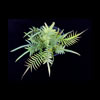 |
September 23, 2010 | "Waste Treatment Plant" | Scientists from Purdue University are trying to find a way to use plants to remove toxic arsenic from soils and waters. They have found a gene in certain types of ferns that can tolerate arsenic. Check out this Press Release. | 90 seconds |
 |
August 31, 2010 | "Slice of Life" | Princeton University scientists may have discovered the oldest fossils of animal bodies. This changes when scientists think animal life appeared on Earth. Check out this Press Release. | 90 seconds |
 |
August 25, 2010 | "Wheel Deal" | The evolution from the Neolithic stone wheel to the sleek wheels of today's racing bikes shows how animals, including humans, have become more efficient over millions of years on Earth. Check out this Press Release. | 90 seconds |
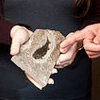 |
August 9, 2010 | "Go Fish" | 360 million years ago there was a mass extinction of fish on Earth. This extinction brought huge changes to life on Earth and was the beginning of modern biodiversity. Check out this Press Release. | 90 seconds |
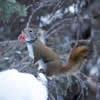 |
June 21, 2010 | "Adopt-A-Squirrel" | Those neighborhood squirrels you often see fighting over food may not seem like they would help each other, but scientists have found that the critters will adopt pups that have lost their mother. Check out this Press Release. | 90 seconds |
 |
June 1, 2010 | "Next Wave" | A team of scientists at MIT have discovered a phenomenon that can cause powerful waves of energy to shoot through tiny wires known as carbon nanotubes. The discovery could lead to a new way of producing electricity. Check out this Press Release. | 90 seconds |
 |
May 6, 2010 | "Self Corn-Trol" | An engineer from the University of Illinois thinks it may be possible to "teach" corn to provide its own nitrogen. If this works farmers won't need to add expensive nitrogen fertilizers to the soil. Check out this Press Release. | 90 seconds |
 |
May 4, 2010 | "Glacial Globe" | Geologists at Harvard University found evidence that sea ice extended to the equator up to 716.5 million years ago. This adds to the theory that a "snowball Earth" event took place around that time. Check out this Press Release. | 90 seconds |
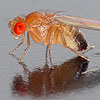 |
March 30, 2010 | "On The Fly" | Using high-speed cameras and computer models, researchers have shown exactly how fruit flies move through the air, and how they keep stable even when a whoosh of wind knocks them off course. Check out this Press Release. | 90 seconds |
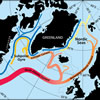 |
March 4, 2010 | "Current Event" | Waters from warmer latitudes, or subtropical waters, are reaching Greenland's glaciers, driving melting and likely triggering an acceleration of ice loss, reports a team of researchers from the Woods Hole Oceanographic Institution. Check out this Press Release. | 90 seconds |
 |
February 23, 2010 | "Viral Vrooom" | Researchers at MIT have shown that they can genetically engineer viruses to build both the positively and negatively charged ends of a lithium-ion battery. Check out this Press Release. | 90 seconds |
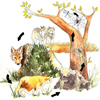 |
January 20, 2010 | "Mess O' Predators" | A new study led by Oregon State University shows that declining populations of "apex" predators such as wolves, lions or sharks has led to a huge increase in smaller "mesopredators" that are causing major economic and ecological disruptions. Check out this Press Release. | 90 seconds |
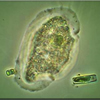 |
January 20, 2010 | "Amoeba Cheaters" | New research out of Rice University and Baylor College of Medicine says that cheaters may prosper in the short term, but over time they seem doomed to fail, at least in the microscopic world of amoebas where natural selection favors the noble. Check out this Press Release. | 90 seconds |
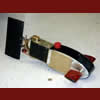 |
December 14, 2009 | "A School of Robofish" | Kristi Morgansen from the University of Washington has built three Robofish that communicate with one another underwater and can work together. The robots can be programmed to either all swim in one direction or all swim in different directions. Check out this Press Release. | 90 seconds |
 |
November 13, 2009 | "Risky Business" | Scientists looking into how to lower the risk of future climate change have found that reducing carbon emissions now can make a difference. Making quick changes now would improve our changes of avoiding a temperature increase of more than 2 degrees Celsius above the pre-industrial level. Check out this Press Release. | 90 seconds |
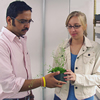 |
October 29, 2009 | "Family Roots" | Plants may not have eyes and ears, but they can recognize their siblings. Sibling plants growing next to each other don't send out roots to compete. But when growing next to an unrelated plant, they rapidly grow roots to compete for water and nutrients. Check out this Press Release. | 90 seconds |
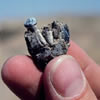 |
October 15, 2009 | "Ardi-Facts" | An international team of scientists has described Ardipithecus ramidus, a hominid species that lived 4.4 million years ago in what is now Ethiopia. The female skeleton, nicknamed Ardi, is 4.4 million years old, 1.2 million years older than the skeleton of Lucy. Check out this Press Release. | 90 seconds |
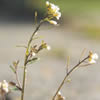 |
October 14, 2009 | "Bacterial Bouncers" | A team of researchers have identified a group of plant proteins that "shut the door" on bacteria that would otherwise infect the plant's leaves. The findings help scientists understand plants' immune systems and will help protect crops and horticultural plants against diseases. Check out this Press Release. | 90 seconds |
 |
September 18, 2009 | "Rock the House" | Engineers have created a structural design that lets buildings rock during earthquakes, then correct themselves when the shaking stops, confining damage to replaceable steel "fuses." Check out this Press Release. | 90 seconds |
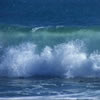 |
September 18, 2009 | "Cloak Works" | Mathematicians have developed a brand new method of cloaking that could someday shield submarines from sonar, planes from radar, buildings from earthquakes, and coastal structures from tsunamis. Check out this Press Release. | 90 seconds |
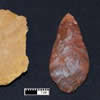 |
September 3, 2009 | "Bake 'n Flake" | A team of researchers has found that early modern humans who lived on the coast of the southern tip of Africa used fire to improve their stone tools. Check out this Press Release. | 90 seconds |
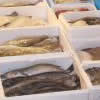 |
August 28, 2009 | "Fish Futures" | A team of international scientists found that managing fisheries does help populations of fish to grow. This is especially important news for fish species that have been overfished. Check out this Press Release. | 90 seconds |
 |
August 14, 2009 | "Fluid Motion" | Researchers are using sound waves to move fluids through tiny detectors that are only millimeters or centimeters in size. Check out this Press Release. | 90 seconds |
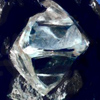 |
August 6, 2009 | "Diamond Delivery" | Researchers have discovered a way to use microscopic diamonds for delivering and releasing medicines to a specific location in the body that needs it. This mineral may be able to help heal wounds and burns by bringing insulin to the injury. Check out this Press Release. | 90 seconds |
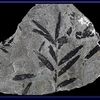 |
July 9, 2009 | "Past Leaves" | Researchers have found evidence for a sudden collapse in plant biodiversity 200 million years ago. Fossilized leaves point to rising carbon dioxide in the atmosphere, which can cause temperatures to rise and harms plants. Check out this Press Release. | 90 seconds |
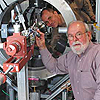 |
June 26, 2009 | "Upping the Anti" | Two physicists at Washington State University have developed a concept for a 100% efficient, portable fuel cell that uses positrons from antimatter as its energy source. They have taken the first steps to harness the power of antimatter, which could be able to power deep space travel as well as energy use on Earth. Check out this Press Release. | 90 seconds |
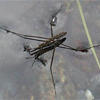 |
June 4, 2009 | "Wet and Wild" | Have you ever noticed that some insects can walk on water at the surface of ponds? This physical property is called super hydrophobia. Researchers are using computer-aided tests to study how super hydrophobia works. It may be the key to inventions like self-cleaning clothing and tiny robots that can walk on water. Check out this Press Release. | 90 seconds |
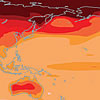 |
April 28, 2009 | "Changing Change" | We can greatly reduce the threat of climate change. How? According to climate models, if we cut greenhouse gas emissions by 70% during this century we might avoid the some of the worst impacts of climate change. Global temperatures would still rise, but events like sea-level rise might be partially avoided. Check out this Press Release. | 90 seconds |
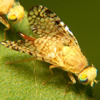 |
April 17, 2009 | "Blow Flies" | Scientists have learned that fruit flies use their antennae of fruit flies sense wind; once they feel the wind they can decide to stand completely still. Check out this Press Release. | 90 seconds |
 |
April 8, 2009 | "Flextronics" | Did you say flexible electronics? Researchers at Cornell University and the University of Melbourne, Australia, are making new materials from a gentle solvent called Supercritical Carbon Dioxide that could produce things like a TV screen that rolls up! Check out this Press Release. | 90 seconds |
 |
March 25, 2009 | "High Life" | Gases rising from deep within the Earth fuel the world's highest known microbial ecosystems near the rim of the Socompa volcano. Located in the Andes Mountains in the Atacama Desert, this extreme environment has thin air, intense UV radiation, and a harsh climate, yet microbes thrive! Check out this Press Release. | 90 seconds |
| |
March 10, 2009 | "Global Worming" | Researchers are studying how rising temperatures are affecting a tiny worm that lives in Antarctica. They want to learn more about the impacts of global warming on Antarctica’s ecosystem. Check out this Press Release. | 90 seconds |
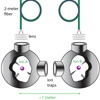 |
February 26, 2009 | "Quantum Leap" | Scientists have, for the first time ever, successfully teleported information between two atoms at a distance of one meter. Check out this Press Release. | 90 seconds |
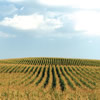 |
February 3, 2009 | "Food Plight" | Scientists from the Univeristy of Washington and Stanford University have found that a quickly warming climate will probably lead to serious damages of crops in the tropics and subtrops by the end of this century. Check out this Press Release. | 90 seconds |
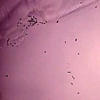 |
January 22, 2009 | "Shrinky Dinghies" | Researchers at Penn State University are teaching nanoparticles to swim. They have found a way to propel tiny rods of gold/platinum, each less than one one-hundredth the thickness of a hair, with a chemical reaction. Check out this Press Release. | 90 seconds |
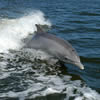 |
December 19, 2008 | "Tool Time" | Researchers are studying bottlenose dolphins that use marine sponges as a tool to hunt for food. Check out this Press Release. | 90 seconds |
 |
December 15, 2008 | "Bac-Tery Powered" | Scientists have learned that an incredible species of bacteria produces an electric current when it is attached to a surface that conducts electricity. Check out this News Story. | 90 seconds |
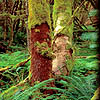 |
November 18, 2008 | "Green Mile" | Researcher Nalini Nadkarni currently advises a team of prison inmates in Washington State on how best to grow mosses. The mosses are being taken from Pacific Northwest forests by horticulturalists. This program aims to add them back to the forests. Check out this Press Release. | 90 seconds |
 |
October 29, 2008 | "Ground Control" | Iowa State researchers are working on creating high tech networks of underground sensors. Buried in farm fields, these sensors would give farmers constant feedback on soil moisture and other ground conditions. Check out this Press Release. | 90 seconds |
 |
October 22, 2008 | "Multi-Faceted" | Scientists have developed a device made of tiny diamonds that could be used to deliver chemotheraphy drugs to places in a human body where cancerous tumors have been removed. Check out this Press Release. | 90 seconds |
 |
October 22, 2008 | "Collateral Damage" | Pine bark beetles appear to be doing more than killing forest trees in the Rocky Mountains. Scientists suspect that their hunger for trees is also changing local weather and air quality. Check out this News Story. | 90 seconds |
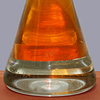 |
September 29, 2008 | "Sugar Rush" | Researchers have successfully converted sugar that comes from agricultural waste and non-food plants into gasoline, diesel, and jet fuel. Check out this Press Release. | 90 seconds |
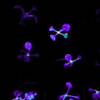 |
September 19, 2008 | "Night Moves" | A team of biologists has found the genes that allow plants to have growth bursts at night and allow them to compete when their leaves are shaded by other plants. Check out this Press Release. | 90 seconds |
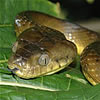 |
September 11, 2008 | "Going, Going, Guam" | Biologists have found that an invasive species of brown tree snake is changing forests on the South Pacific island of Guam. This species of snake has been hunting the island's bird population to near extinction. Check out this Press Release. | 90 seconds |
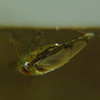 |
September 4, 2008 | "Buggles" | Researchers have figured out how hundreds of types of insects are able to breathe under water. Their rough, water repellent coats trap air next to their bodies and form a small airpocket from which to breathe. Check out this Press Release. | 90 seconds |
 |
August 5, 2008 | "Break Water" | Researchers have made a discovery that could transform solar power into an everyday energy source. They have found a simple, inexpensive, and efficient way to store solar energy for when the Sun isn't shining. Check out this Press Release. | 90 seconds |
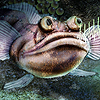 |
July 29, 2008 | "Deep Voices" | Talking fish? New research shows that fish vocalize with hums and grunts. Long ago, fish evolved this ability before vertebrates first ventured out of the water. Check out this News Story . | 90 seconds |
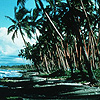 |
July 15, 2008 | "Degrees of Survival" | Global warming is likely a greater threat to species living in the tropics than species from cooler climates because tropical species don't tolerate temperature increases as well. Check out this Press Release. | 90 seconds |
 |
June 26, 2008 | "Fragrant Violation" | Air pollution from power plants and automobiles is making flower fragrance less strong. This makes it harder for pollinating insects to follow the scent trail to the flower. Check out this Press Release. | 90 seconds |
 |
June 20, 2008 | "Frogantuan" | Paleontologist have discovered the remains of what may be the largest frog ever to exist. The fossilized remains of this 16-inch, 10-pound ancient frog were found in Madagascar. The giant is related to frogs living today in South America. Check out this Press Release. | 90 seconds |
 |
May 12, 2008 | Café Latte Batte | A new University of Michigan study shows the impact bats have on ecological systems. The study reveals that bats are better than birds at devouring coffee-eating insects on organic coffee farms. Want to learn more? Check out this Press Release. | 90 seconds |
 |
April 22, 2008 | Gasoline Plant | Researchers have made a breakthrough in the development of "green gasoline," a liquid identical to standard gasoline yet made from sources like poplar trees. Want to learn more? Check out this Press Release. | 90 seconds |
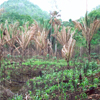 |
April 11, 2008 | Tropical Hunch | Using global databases and computer models to look at patterns of emerging diseases, scientists are able for the first time to plot, map and predict where future disease outbreaks might originate. Want to learn more? Check out this Press Release. | 90 seconds |
 |
March 24, 2008 | Flight Path | A new study shows that birds' wings evolved because the birds were using their wings to run up steep surfaces in order to avoid predators. Eventually, their wings became strong enough for true flight. Want to learn more? Check out this Press Release. | 90 seconds |
 |
February 28, 2008 | Systematic Search | A team of astronomers reported the discovery of a solar system nearly 5,000 light years away containing smaller versions of Jupiter and Saturn, suggesting that our galaxy could contain many star systems similar to our own. Want to learn more? Check out this Press Release. | 90 seconds |
 |
February 28, 2008 | Eye Screen | Engineers have combined a flexible, safe contact lens with an imprinted electronic circuit and lights. Want to learn more? Check out this Press Release. | 90 seconds |
 |
January 22, 2008 | Loving Environment | A study shows divorce is bad for the environment. This is due to increased levels of energy consumption. Want to learn more? Check out this Press Release from NSF. | 90 seconds |
 |
January 14, 2008 | Got Mica? | Earth's first life may have formed inside a primordial soup that was sandwiched between the many layers of the mineral mica. Want to learn more? Check out this Press Release. | 90 seconds |
 |
January 14, 2008 | Evolution Revolution | A new study suggests human evolution has been supercharged the past 40,000 years. Want to know more? Read this Press Release from the University of Wisconsin-Madison. | 90 seconds |
 |
January 14, 2008 | Distant Whaletive | A research team has discovered the missing link between whales and their four-footed ancestors. Want to learn more? Read this Press Release. | 90 seconds |
 |
July 12, 2007 | Tropical Punch | A study from a team of scientists sheds light on one of the biggest mysteries in climate science. What happens to the 8 billion tons of carbon emissions from motor vehicles, factories, etc. each year? Northern forests and tropical forests play a part in the uptake of carbon. Listen and Learn! | 90 seconds |
 |
June 7, 2007 | Reef Savers | Marine reserves protect fish and other marine life from overfishing, but now research shows the benefit is even greater than that. The reserves could also help coral reefs to survive... because algae and seaweed, which are usually harmful to coral, are controlled by grazing parrotfish. Kind of a reversal of roles in the marine world -- coral reefs, which have supported thousands of fish and other marine species for millions of years, are now getting a helping "hand" from fish. Want to learn more?Read this Press Release. | 90 seconds |
 More Podcasts from the National Science Foundation
More Podcasts from the National Science Foundation
Last modified September 26, 2010 by Becca Hatheway.







